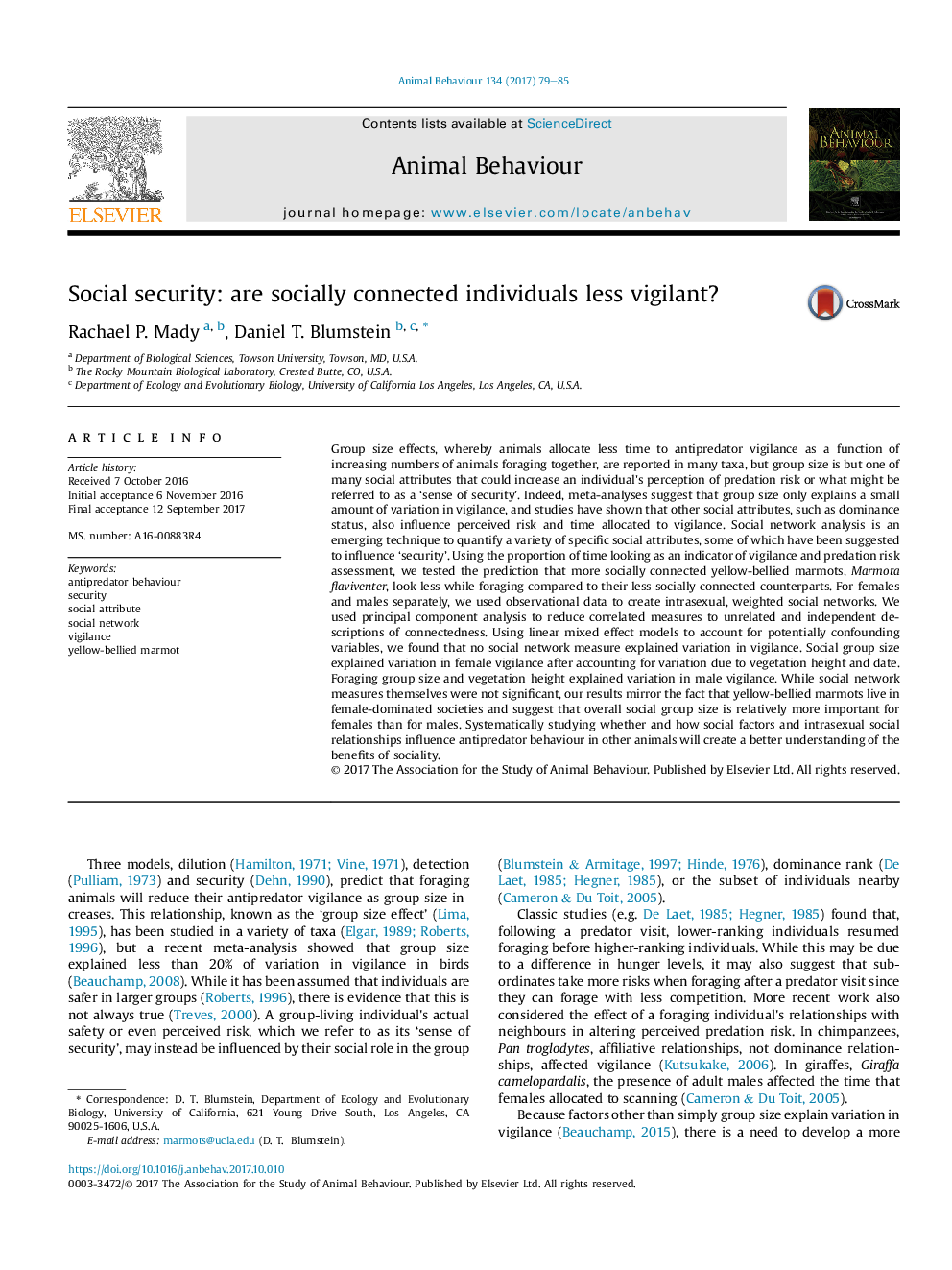| کد مقاله | کد نشریه | سال انتشار | مقاله انگلیسی | نسخه تمام متن |
|---|---|---|---|---|
| 8488781 | 1552194 | 2017 | 7 صفحه PDF | دانلود رایگان |
عنوان انگلیسی مقاله ISI
Social security: are socially connected individuals less vigilant?
ترجمه فارسی عنوان
امنیت اجتماعی: آیا افراد متصل به اجتماع کمتر هوشیار هستند؟
دانلود مقاله + سفارش ترجمه
دانلود مقاله ISI انگلیسی
رایگان برای ایرانیان
کلمات کلیدی
رفتار ضد شکنجه، امنیت، ویژگی اجتماعی، شبکه اجتماعی، هوشیار زردآلو،
موضوعات مرتبط
علوم زیستی و بیوفناوری
علوم کشاورزی و بیولوژیک
علوم دامی و جانورشناسی
چکیده انگلیسی
Group size effects, whereby animals allocate less time to antipredator vigilance as a function of increasing numbers of animals foraging together, are reported in many taxa, but group size is but one of many social attributes that could increase an individual's perception of predation risk or what might be referred to as a 'sense of security'. Indeed, meta-analyses suggest that group size only explains a small amount of variation in vigilance, and studies have shown that other social attributes, such as dominance status, also influence perceived risk and time allocated to vigilance. Social network analysis is an emerging technique to quantify a variety of specific social attributes, some of which have been suggested to influence 'security'. Using the proportion of time looking as an indicator of vigilance and predation risk assessment, we tested the prediction that more socially connected yellow-bellied marmots, Marmota flaviventer, look less while foraging compared to their less socially connected counterparts. For females and males separately, we used observational data to create intrasexual, weighted social networks. We used principal component analysis to reduce correlated measures to unrelated and independent descriptions of connectedness. Using linear mixed effect models to account for potentially confounding variables, we found that no social network measure explained variation in vigilance. Social group size explained variation in female vigilance after accounting for variation due to vegetation height and date. Foraging group size and vegetation height explained variation in male vigilance. While social network measures themselves were not significant, our results mirror the fact that yellow-bellied marmots live in female-dominated societies and suggest that overall social group size is relatively more important for females than for males. Systematically studying whether and how social factors and intrasexual social relationships influence antipredator behaviour in other animals will create a better understanding of the benefits of sociality.
ناشر
Database: Elsevier - ScienceDirect (ساینس دایرکت)
Journal: Animal Behaviour - Volume 134, December 2017, Pages 79-85
Journal: Animal Behaviour - Volume 134, December 2017, Pages 79-85
نویسندگان
Rachael P. Mady, Daniel T. Blumstein,
